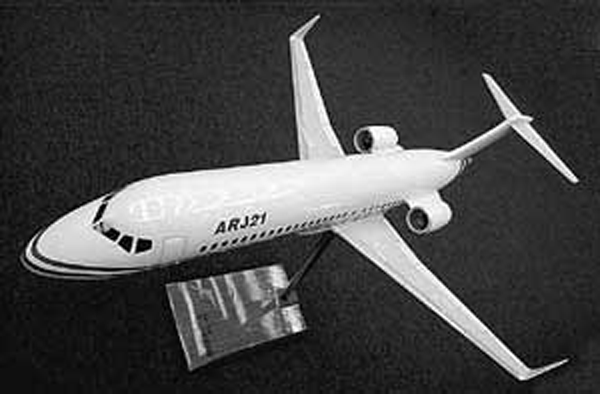Promoting
Regional Aviation In China
Finally now in 2006, Civil
Aviation Administration of China (CAAC) has announced measures to promote
the development of China’s regional aviation airports.
That topic has been a subject of debate
here for years.
Measures include categorized directions
to regional aviation transportation of different areas, governmental subsidiaries
to the operation of some regional aviation transportation and airports,
loosening the entry barrier of the market of regional aviation transportation,
and actively increasing the capacity of regional aviation transportation
along with the construction of region airports.
Until the end of 2005, the number of registered
regional jets in China was 74, comprising about 9.8 percent of the overall
fleet serving the country.
Number of airports that operate regional flights is 97, composing 71 percent
of all the airports. Flights with range of less than 800 kilometers numbered
368, or about 31.7 percent of all commercial flight movements.
However, passengers carried by regional
jets only consist of about of 3.7 percent of domestic aviation passenger
totals.
Covering a vast territory with various terrains
and a large population, China is ripe for developing regional aviation
transportation.
But at this point, the continent’s
regional aviation transportation infrastructure suffers from continued
losses due to both small fleets and low usage rate of regional airports,
CAAC said that it would employ three different
strategies, including market tools only, a combination of market tools
and policy support and policy support only, to guide areas of growth and
development across the regional airport sector.
Jets Made
In China

One answer to accelerating
China's regional airport growth is the first Chinese designed feeder
passenger jet, the ARJ21 that is expected to make its maiden flight
in 2008.
The new regional jet, with 70-90 seats,
will be powered by a CF34-10A engine made by the General Electric
Company, but all other component parts of the jet will be manufactured
by domestic Chinese enterprises.
ARJ21 is designed to operate in the high
altitudes and high temperatures of China's western airports with
an operating ceiling of 39,000 feet at speeds of 450 nautical miles
per hour.
ARJ21 program was formally approved in 2002
and today with about 41 orders is expected to go into production
in 2009.
Insiders said that China needs about 700
feeder passenger aircraft with 70-90 seats in the coming 20 years. |
CAAC is allowing airlines much easier access to independently
start new domestic flight services.
Airlines in the past have been reluctant
to start new regional flights because of red tape that extended the process
of getting service to market.
Another sticking point in regional airport
development has been complaints from airlines that went through all the
time and effort to enter and in some cases create a market and build a
brand, having CAAC turn around and allow other airlines easy access to
that market.
CAAC now says that it will now favor and
offer other incentives to airlines that start up and build markets to
underdeveloped regions of the country.
For example, comparing two routes, Beijing-Shanghai-Beijing,
and Beijing-Yichang-Enshi-Beiing, CAAC said it would offer an advantage
to the carrier that develops the Enshi route because Enshi is a regional
airport.
CAAC has said flatly that it will protect
airlines that commence new regional flight service to some of the poorer
areas of the country by allowing exclusive services for designated periods.
Another hindrance to the development of
China’s regional aviation transportation is the high import tariff
on regional jet and parts. Compared with the 5 percent tariff rate of
large jets and parts imports, tariff rate of regional jets and parts is
as high as 23 percent.
The result is that purchasing a foreign
70-seat jet costs as much as a foreign 130-seat jet.
To encourage airlines to increase regional
jets, CAAC said it is further simplifying the procedure of examining and
approving the purchase and lease of foreign regional jets.
CAAC also said that it is actively negotiating
with concerned departments of China to reduce the tariff rate of regional
jet imports.
Investment policy says CAAC from now further
favors regional airports in provincial areas, especially those with poor
ground traffic conditions.
Also to support the development of China’s
regional aviation transportation, CAAC is providing governmental subsidiaries
to some regional routes and airports.
Meanwhile, CAAC is establishing a standardized
evaluation system for the operation cost of routes and airports to both
calculate the deficit and establishing more realistic airport usage charges,
while also providing exclusive gateways to regional jets.
Han Bing
|



